Are you curious about electric skateboards but baffled by the various types and models available? Don’t worry; you’re not alone! With so many options on the market, figuring out which is right for you can be overwhelming. In this blog post, we’ll break down the different types of electric skateboards and help you understand their features and benefits. From longboards to shortboards, off-road models to sleek commuters, there’s an electric skateboard out there to suit every style and preference.
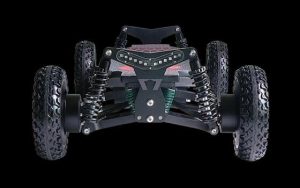
Different Types of Motors
Three main types of motors are used in electric skateboards: hub, belt, and brushless. Hub motors are the most common type of motor used in electric skateboards. They are typically located in the middle of the board, underneath the deck, and are encased in a metal housing. Belt motors are less common than hub motors and are typically located in the rear of the board. Brushless motors are the least common motor used in electric skateboards and are usually found in the front or back of the board.
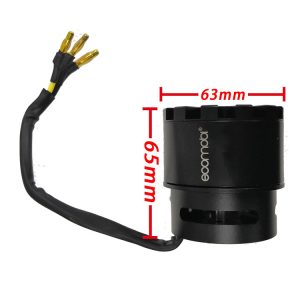
Impact of Battery Capacity on Performance
An electric skateboard’s battery capacity impacts the board’s performance in a few key ways:
- Range – The battery capacity determines how far an electric skateboard can go on a single charge. A higher-capacity battery will allow of a more extended range before recharging. This is important for long-distance riding. Riders prefer batteries that take 10-20 miles or more per charge.
- Top speed – The battery provides power to the electric motor, which propels the skateboard. A higher-capacity battery can supply more power for a faster top speed. More powerful batteries allow of reaching and sustaining higher top speeds. Top speeds of 10-25 mph are typical for most electric skateboards.
- Acceleration – The amount of power available from the battery impacts how quickly the skateboard can accelerate. A more powerful high-capacity battery will allow for faster acceleration and more responsive riding. Quick acceleration provides a more thrilling riding experience.
- Weight – Larger, higher-capacity batteries do weigh more, affecting the electric skateboard’s overall weight. There is a trade-off between battery life/power and weight. Riders want a lighter-weight board for easy portability.
- Recharging time – Battery capacity determines how long it takes to recharge the skateboard. Higher-capacity batteries typically take longer to fully recharge compared to smaller batteries. Recharging 3-5 hours is typical for most boards. Some riders prefer faster charging in 2-3 hours for convenience.
- Cost – Battery packs represent a significant portion of the overall cost of an electric skateboard. Higher capacity, more powerful lithium-ion battery packs tend to cost more than smaller capacity packs. There is a balance between capacity/performance and affordability.
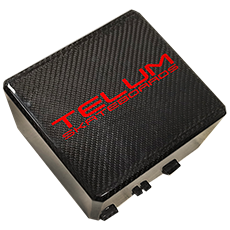
The Influence of Deck Design
The deck design of an electric skateboard has an important influence on its performance, riding experience, portability, and safety. Some key aspects of deck design to consider:
- Size and shape: The deck’s size, width, and shape determine how stable and maneuverable the board feels. Wider decks provide more stability at higher speeds, while narrower decks are more nimble and responsive. The deck shape, tapered or flat, also impacts handling. Longer decks can accommodate larger batteries.
- Flexibility: A flexible deck offers more comfort by absorbing road imperfections but is less stable. A stiff deck provides a more solid, secure feel but transmits more vibration. The ideal flexibility depends on intended usage. More flex for rough roads, stiffer for high speeds.
- Rails: Side rails or edges help prevent the rider’s feet from sliding off the deck. Higher rails provide more board edge feedback and control; lower rails make you feel open and free.
- Grip tape: Non-slip grip tape or a textured surface keeps the rider’s feet planted firmly on the deck for control, balance, and pushing. High-quality grip tape lasts longer.
- Water resistance: A sealed deck protects the internal electronics from rain, water spray, and spills. Coatings or laminates make wood or composite decks water-resistant. Necessary for wet weather riding.
- Drop-through: A lower deck, “drop-through” design allows stepping on and off more easily and mounting smaller wheels. More maneuverable and portable. Not ideal for high speeds or bigger riders.
- Top-mount: A higher deck, “top-mount” design supports larger, more stable wheels for a smoother, faster ride at higher top speeds.
- Material: Wood, composite, aluminum, and flex panels all make for different deck designs with unique properties. Wood is flexible and lightweight but not waterproof. Composite is durable and flexible. Aluminum is very stiff, stable, and lightweight. Flex panels balance stiffness and flexibility.
Riders need to choose deck dimensions, flexibility, materials, and features that suit their intended usage and preferences for an enjoyable, capable riding experience. Deck design is key to performance.
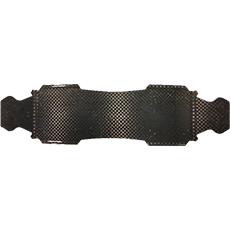
Different Wheels and Tires
Different electric skateboards have different-sized wheels and tires. The size of the wheel will affect the speed and distance the skateboard can travel, and the tire’s size will affect the skateboard’s traction and stability.
The most common sizes for electric skateboard wheels are:
- 70mm
- 80mm
- 90mm
- 100mm
The most common sizes for electric skateboard tires are:
- 2.5 inches
- 3.0 inches
- 3.5 inches
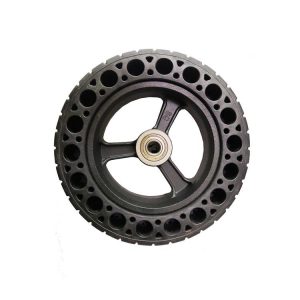
Weight and Portability
- Weight: A lighter board will be easier to carry, handle and maneuver. Total board weight includes the deck, battery pack, motors, electronics, and other components. Lighter boards, under 25 lbs, can often be lifted and carried with one hand, while heavier boards, 40 lbs+, require two people or a roller bag.
- Portability: A portable board is compact and designed to be disassembled into small pieces or folded up for easy transportation.
Accessories for Electric Skateboards
There are a few different types of accessories that you should consider when you are looking at electric skateboards. These include the following:
- Helmet: A helmet is the most important safety gear for any skateboarder. Helmets designed for skateboarding, electric skateboarding, or scootering will provide the best protection.
- Elbow and knee pads: Pad protection for elbows and knees prevent injury from falls. Essential safety gear like a helmet.
- Wrist guards: Wrist guards or wrist braces help prevent wrist sprains or breaks when catching a fall with outstretched arms.
- Protective clothing: Skateboarding padding, guards, and durable clothing provide extra protection and impact absorption. Especially important for beginners learning how to fall safely.
- Headlights: Headlights enable safer night riding visibility. Many boards have headlight mounting points or brackets to attach lights easily. It helps prevent collisions with pedestrians or vehicles after dark.
- Taillight: A red taillight or red strobe light mounted to the back of the board alerts drivers from behind to your presence. Legally required lighting for public road riding in some areas.
- Tools kit: Basic tools like Allen wrenches, spanners, torque wrenches, screwdrivers, nail Clippers, wire cutters, etc., help with minor repairs, adjustments, or assembly/disassembly needs. It prevents being stuck with a non-working board due to a small part or tool.
- Chargers and batteries: Extra chargers allow charging multiple batteries at once so you always have a charged battery to go with the board. Spare batteries provide redundancy on long rides in case a battery dies unexpectedly.
- Photography equipment: Cameras, GoPro mounts, and other accessories allow of recording rides and capturing footage and still images. Videos and photos can be enjoyed and shared later. GoPro and standard action cameras used for electric skateboarders are popular.
- Bluetooth speakers: Portable Bluetooth speakers allow listening to music on the go as you ride. Mountable speakers prevent the need to hold a speaker, freeing up your hands.
- Tool pouches: Sturdy pouches or bags built to securely store tools and gear when riding to prevent equipment from falling off or rattling around. Straps prevent pouches from swaying or swinging during riding.
- Therapy pads: Anti-fatigue mats or therapy pads provide cushioning when stopped for rest, charging, or maintenance. Comfortable standing rest padding.
- Rain covers: Rain covers protect electric skateboards from rain, wet weather, spray, and other moisture when riding or in storage. Breathable covers allow of some ventilation.
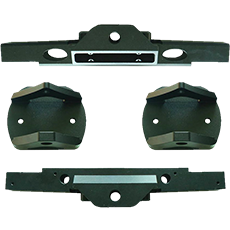
Read More
- Some Real Feelings Of My First Riding On Mini 2
- The Best Electric Skateboard With An Affordable Price
- What Should We Pay Attention To When Cleaning Skateboards
- Lets Talk About Some Knowledge About Eboards And Explain Why You Choose Ecomobl
- Share Some Tips About Maintenance




